
Running Cape Kidnappers
4 min read
We laced up our shoes at 5:00 AM to run the most spectacular track of Hawkes bay. We caught the sunrise and the incredible 20,000 gannets of Cape Kidnappers.
Some of the links on this site are affiliate links. This means if you click on the link and make a purchase, I may receive a small commission at no extra cost to you. Your support helps keep this site running. Thank you!
I am in right in the middle of training for Triple Peaks, a local trail race that usually spans three mountain peaks in Hawkes Bay. This year, one of the trails leading to the third peak is still damaged from the Cyclone, so it is only Twin Peaks, Mount Erin and Te Mata Peak. Instead of a 55 KM race, it is only 35 KM. Still, this is the longest race I have signed up for and I have been training extensively.
I am always in search of a fun place to go running for my long runs on the weekends, and last year I heard of a 20 KM trail along the beach leading up to Cape Kidnappers, the southern end of Hawkes Bay. Besides just the spectacular walk, Cape Kidnappers is also famous for a colony of over 20,000 gannets that nest there from October to the end of April.
I never made it out last year, so this year I really wanted to do it as a sunrise training run.
The tricky part about heading out on the Cape Kidnappers track is the tide. Some sections are unpassable at high tide so generally the advice is to leave 2 hours before low tide and leave the cape (end of the track) no more than 1.5 hours after low tide. I had to find the perfect weekend when the tide and the sunrise line up, and do it before the birds leave for the season.
Running the Cape
So fast-forward a few weeks to March 17th, when I got a couple co-workers who were keen on running it to meet at 5:30 AM at the trailhead. It was pitch black, and the stars were incredible, you could see the Milky Way! We started just 30 min before low tide instead of 2 hours as we were running the whole way instead of walking.
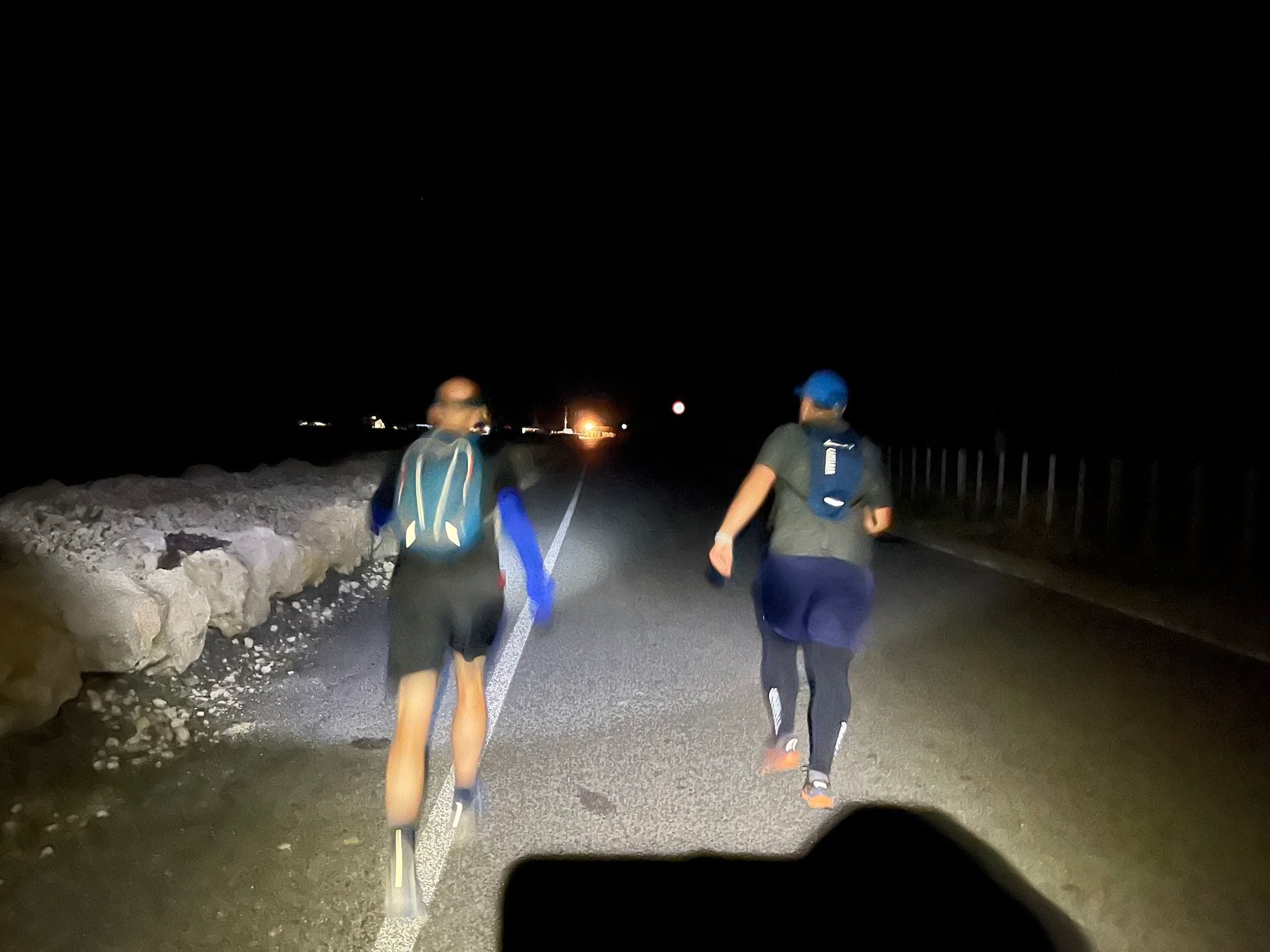
The start of the run is past a holiday RV park, so we quietly sneaked past and headed for the beach. Glad I had remembered to charge my headlamp the night before, because it would have been impossible to do without. We headed down a rickety old staircase to the beach straight onto the rocky shoreline. This had me worried for a bit as the rocks were hard to run on, but this lasted only a few hundred meters and then it was on to beautiful, hard-packed sand. It stayed this way the rest of the beach section of run.
Faint glow of dawn
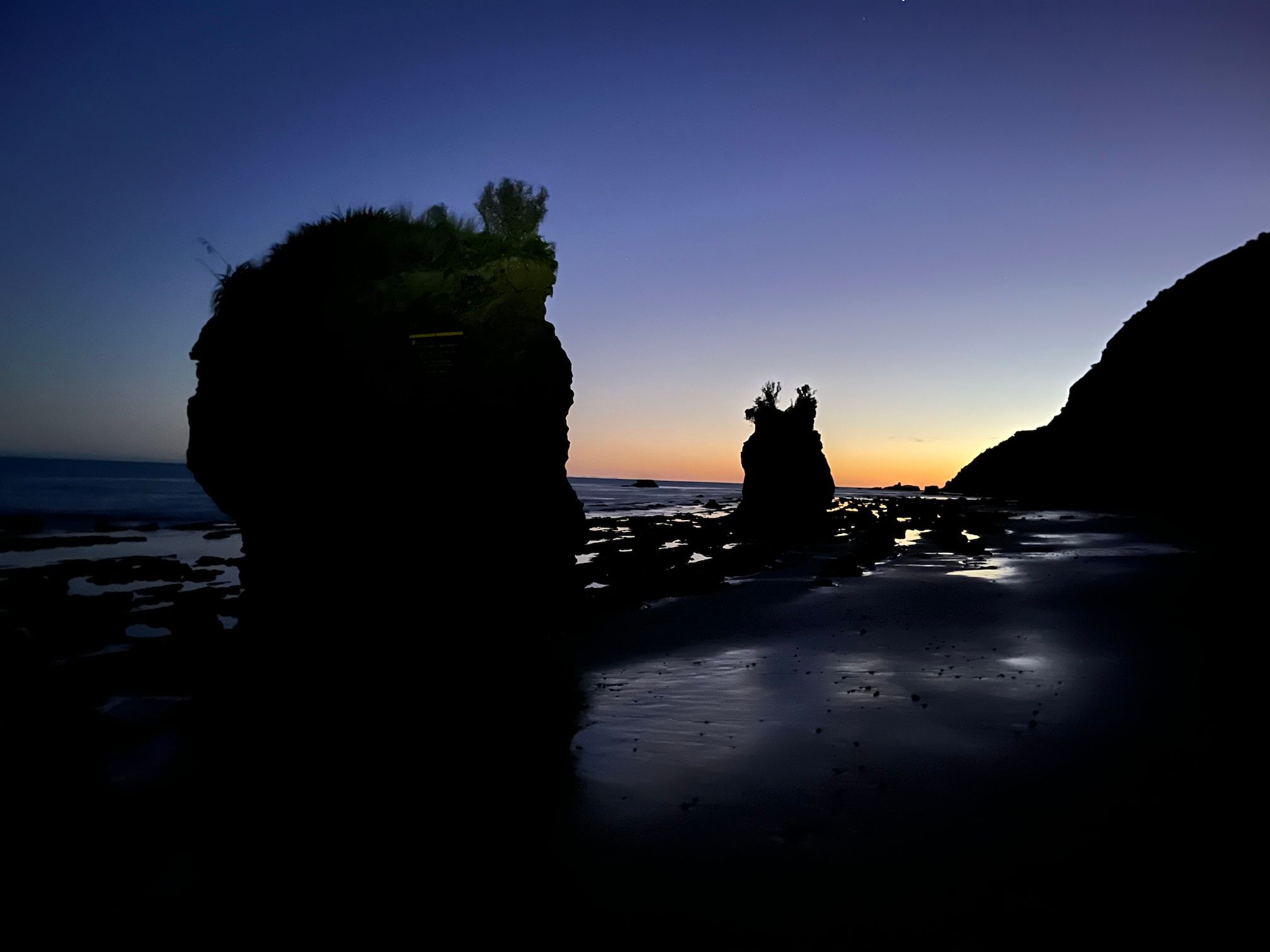
The chilly, autumn morning was the perfect weather for a run. With almost no wind, we had a pretty quick pace going. The track is a bit deceiving as you wind in and out of the coastline, you can’t see too far ahead at any one time.

Around the 7 or 8 km mark, there are a series of rocks that jut out and even at low tide you can get wet walking around them. We got there not too long after low tide and were able to stay dry by timing the swells coming in.
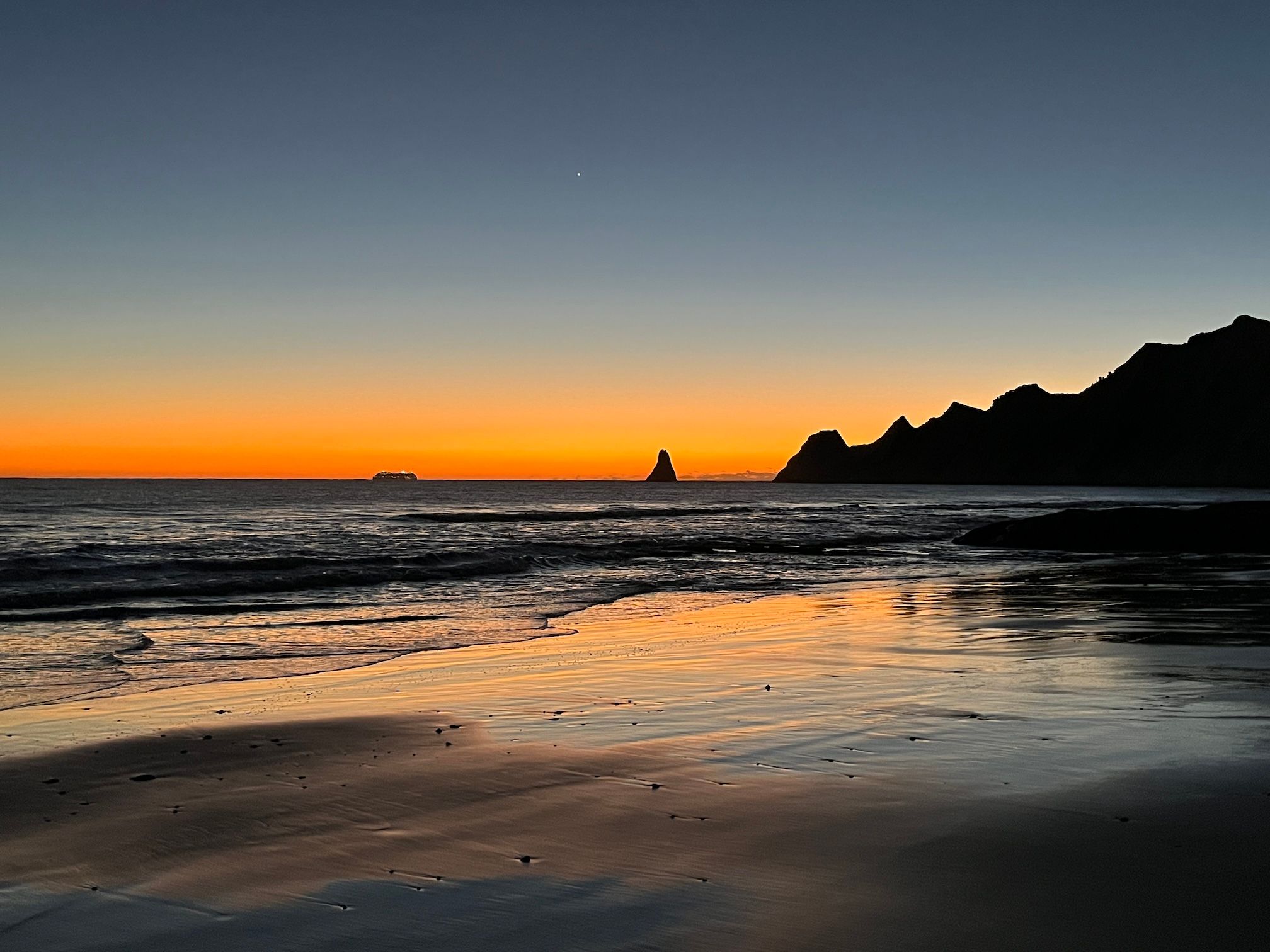
Once you get past the rocks, you will want to be on the lookout for a wooden Cape Kidnappers sign, as that marks where the trail leaves the beach and heads up to the gannet colony. We actually missed it and kept running another half KM before we realized we were off track and headed back. It was good to have the All Trails app, if I had checked it sooner, I would have seen we were coming up on the turn off.
This is when the easy beach run turns into a steep climb for a little over a kilometer. You have a chance to make a pit-stop as there is a rugged, yet decent restroom and a covered pavilion at the start of the climb.

At this point we were just minutes away from sunrise, so we powered up the hill as best we could. Through a couple gates (make sure to shut behind you) and a lot of switch backs. I was heaving pretty hard by the top, but it was worth it.
Gannet Colony
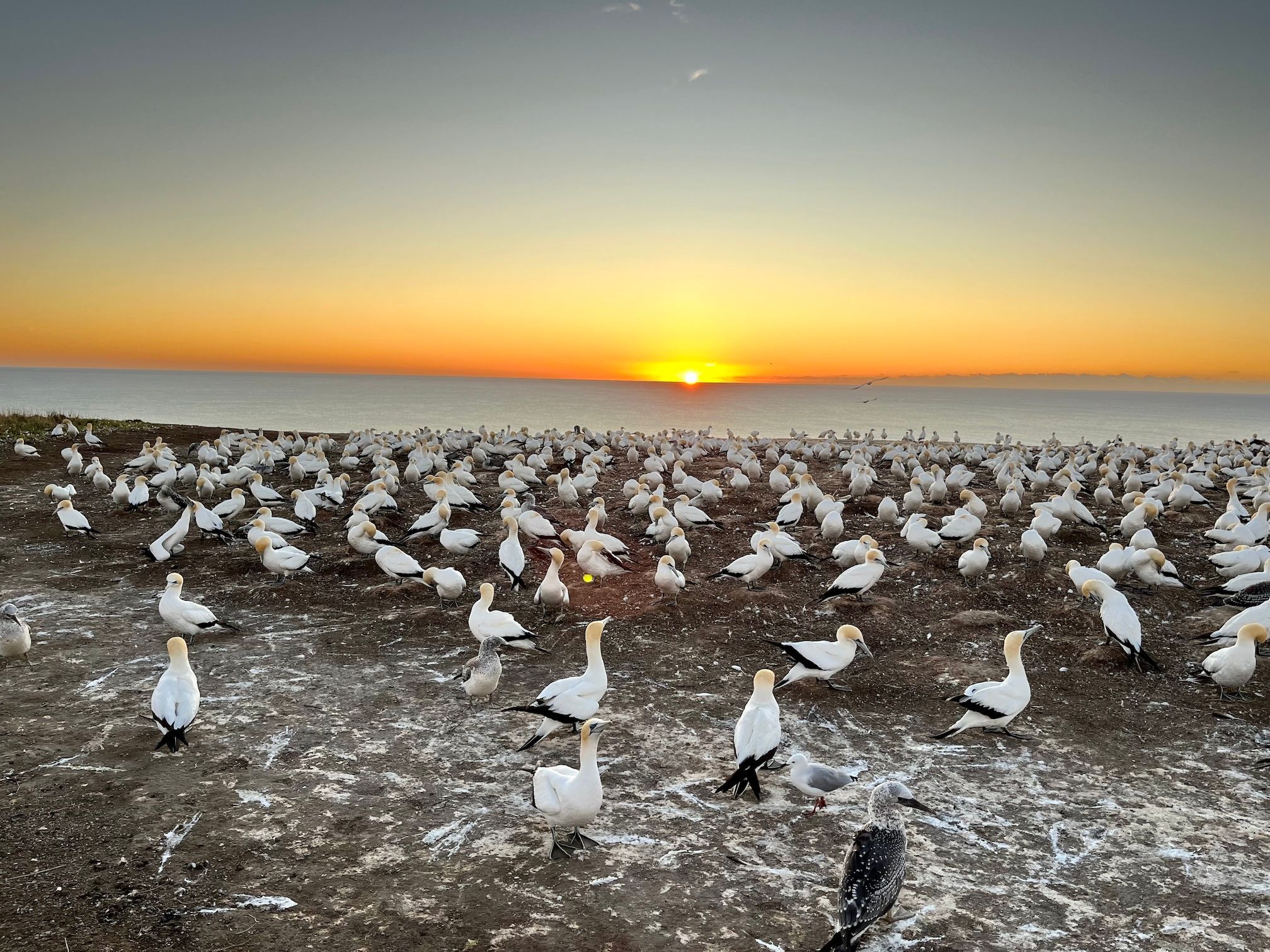
The gannets start nesting here around mid-september, and once the chicks hatch and are big enough, they take off for Australia for the winter around the beginning of May. The chicks were getting pretty big by this point, still greyer than their parents. They were taking off and landing all around us. The noise was pretty incredible.
There is also a secondary colony down below on the point that you can see from up on top.
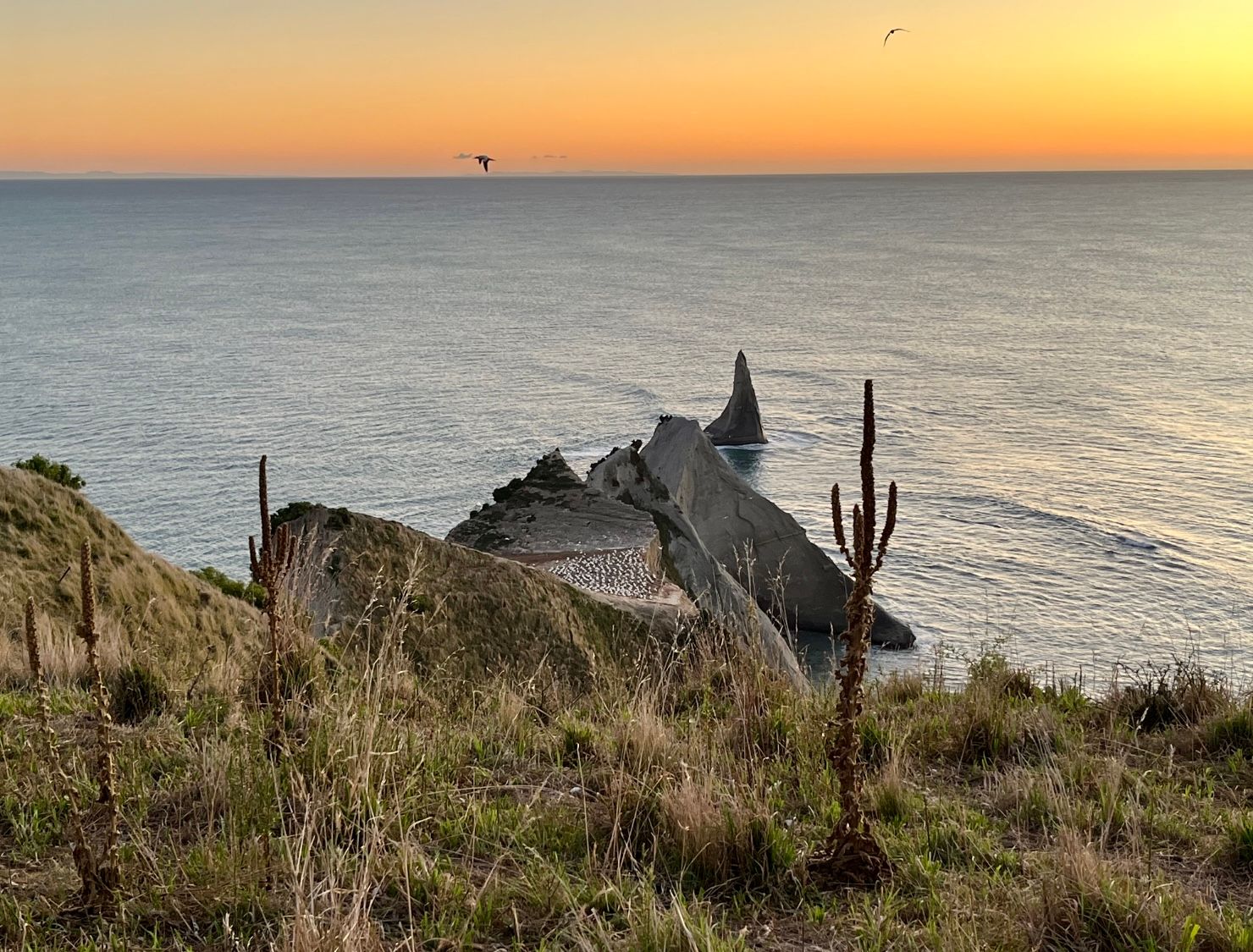
Heading back
We left the top about an hour after low tide with the hopes of keeping our feet dry.
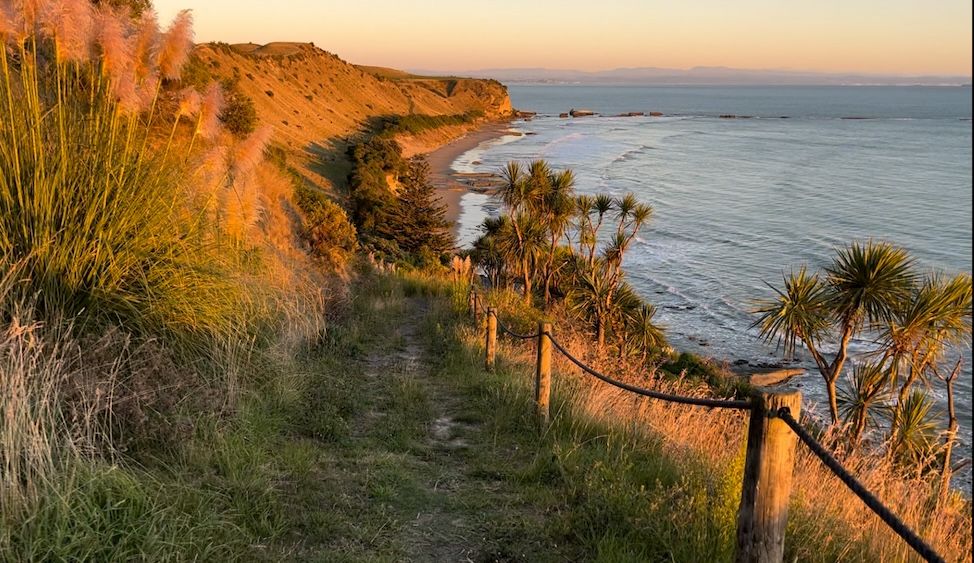
If I wasn’t running, I probably would have stopped and taken my shoes off to wade through it, but instead we tried to just time the swells around the rocks, and made it through pretty unscathed!
There were quite a few gannets on top of several rocks out in the water. We noticed them as we went by the first time, but now could see them a lot better in the light.
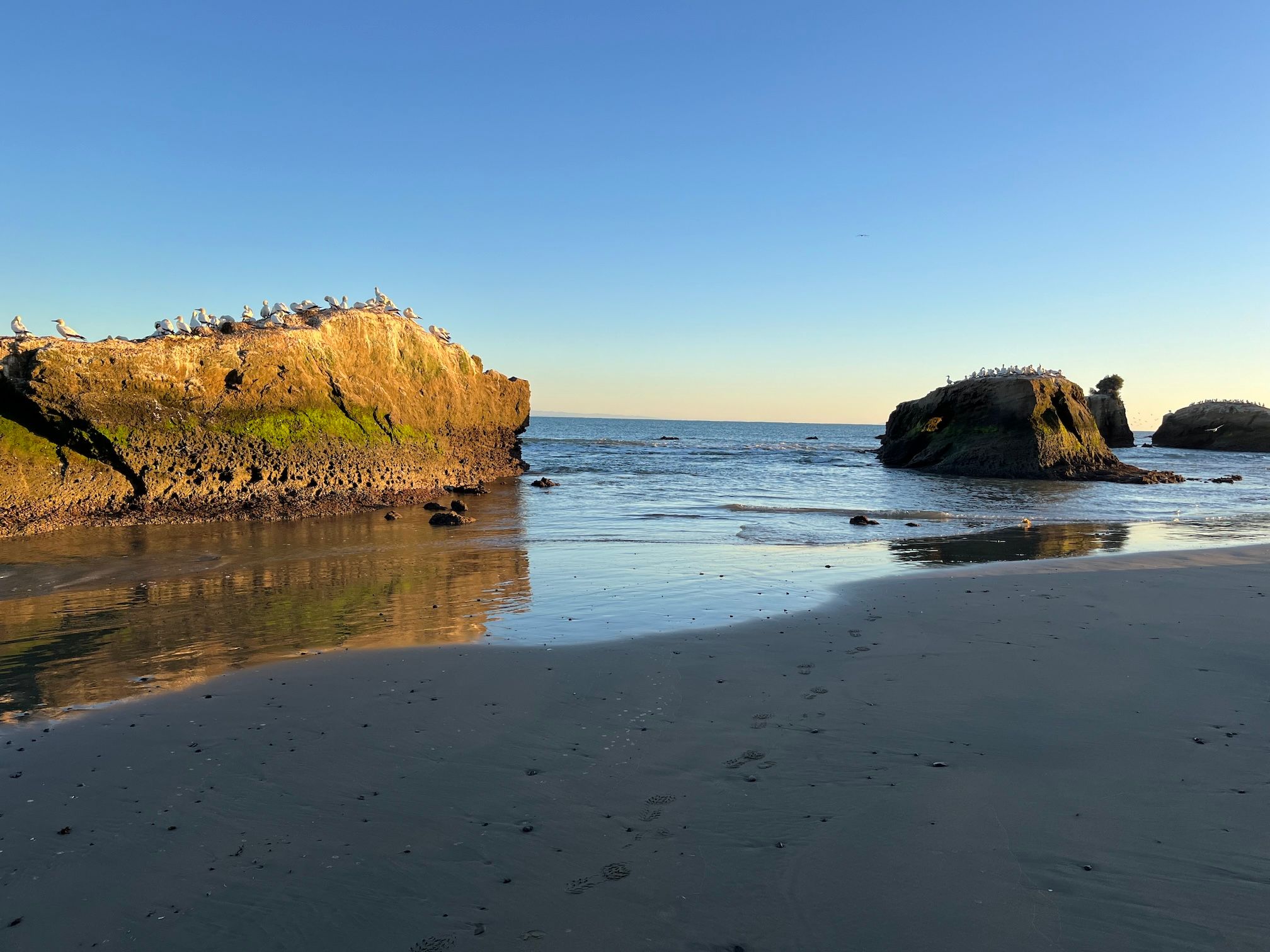
With the sun up, you could really appreciate the beauty of the cliffs we were running past.


Definitely get out to do the Cape Kidnappers track! (Don’t forget to check the tide!)
